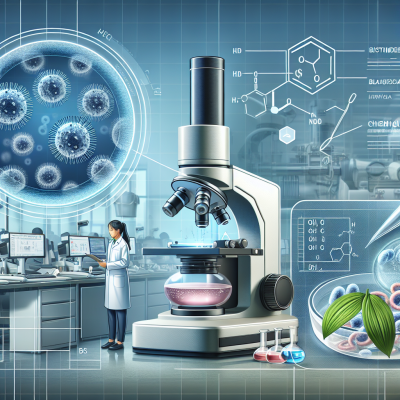
Revolutionizing Food Safety with Cutting-Edge Technologies
Ensuring the global food supply is safe from harmful contaminants is more critical than ever. With the increasing complexity of food production and distribution, accurate and timely food testing has become a cornerstone of public health and safety. Recent innovations in food testing technologies are enabling faster detection, greater sensitivity, and enhanced reliability in identifying chemical and microbial contaminants — all while improving efficiency across the supply chain.
Why Food Testing Is More Important Than Ever
Foodborne illnesses affect millions of people annually, leading to hospitalizations, long-term health complications, and even fatalities. The contamination of food by pathogens like Salmonella, E. coli, and Listeria, or from chemical residues, toxins, and allergens, can have severe health consequences.
As global food trade expands, so do concerns about contamination risks at various points along the supply chain. Rigorous food testing is essential not only for consumer protection but also for maintaining the integrity and reputation of food brands and meeting increasingly strict regulatory standards.
Challenges in Traditional Food Testing Methods
Conventional food testing approaches—such as culture-based microbial testing and chromatography for chemical residues—often require time-consuming sample preparation, skilled technicians, and prolonged analysis times. These limitations can delay response times, increase operational costs, and potentially allow contaminated food products to enter the market unnoticed.
Some key limitations include:
- Extended turnaround times: Traditional microbial testing can take 24–72 hours or longer.
- Low sensitivity: Not all methods detect contaminants at trace levels, leading to false negatives.
- Manual processes: Human errors in sampling and analysis can impact accuracy and repeatability.
Next-Generation Food Testing Technologies
Recent innovations are transforming the food safety landscape by offering faster, more precise, and more automated tools that reduce errors and improve contaminant detection.
1. Real-Time PCR and Isothermal Amplification
DNA-based testing methods, such as real-time polymerase chain reaction (PCR) and loop-mediated isothermal amplification (LAMP), are now widely used for quick and accurate detection of harmful microorganisms. These technologies enable:
- Rapid results: Pathogens can be detected within a few hours instead of days.
- High specificity and sensitivity: Amplification of pathogen-specific DNA offers target accuracy even at low concentrations.
- Multiplexing capability: Multiple pathogens can be screened in a single test tube.
2. Next-Generation Sequencing (NGS)
NGS is reshaping the way we understand microbial communities in food. Not only can it detect and identify pathogens with high precision, but it can also provide insight into antimicrobial resistance and contamination sources.
Benefits of NGS in Food Testing:
- Comprehensive profiling of microbial contaminants
- Traceability in complex food matrices
- Ability to track contamination back to its source
3. Biosensors and Lab-on-a-Chip Devices
Miniaturized biosensors integrated with microfluidics — often referred to as “lab-on-a-chip” platforms — enable on-site food testing. These devices can detect pathogens, toxins, pesticides, and allergens in real-time without the need for centralized laboratories.
Key features include:
- Portable, point-of-need testing
- Minimal sample processing
- Low cost and user-friendly interfaces
4. Spectroscopy and Imaging Techniques
Advanced spectroscopic and hyperspectral imaging methods offer non-destructive, rapid screening of food products for chemical contaminants.
- FTIR and NIR spectroscopy: Used to detect adulterants and verify ingredient authenticity
- Raman spectroscopy: Ideal for identifying foodborne toxins and contaminants at molecular levels
- Hyperspectral cameras: Detect spoilage and contamination without opening packages
5. AI and Machine Learning in Food Safety
Artificial intelligence (AI) and machine learning algorithms are being leveraged to process large datasets from food testing platforms, enabling smarter decision-making and predictive analytics. AI can:
- Identify patterns from historical contamination data
- Predict shelf life and microbial growth under varying storage conditions
- Reduce false alarms by improving specificity of test results
Shaping the Future of the Global Food Supply Chain
Innovative food safety technologies are not only helping companies meet regulatory demands but also reinforcing consumer trust in food brands. By reducing the time from sample collection to action, these advancements are enabling real-time safety monitoring throughout the food chain — from farm to plate.
Integration with Blockchain and Traceability Systems
Food testing results can now be integrated with blockchain-based traceability systems to provide transparent, tamper-proof records. This ensures that safety information is available at every level of production and distribution — a critical feature for global logistics and consumer accountability.
Final Thoughts
The future of food safety lies in combining multiple high-tech tools to create holistic, real-time, and data-driven testing systems. The development and deployment of rapid molecular diagnostics, portable biosensors, AI-powered analysis, and predictive modeling are redefining how we detect and respond to food contamination.
These innovations are more than just tools — they are essential to building a resilient, safe, and sustainable food supply for a growing global population.
Stay updated on the latest advancements in food technology and safety standards to ensure compliance and consumer trust in an ever-evolving industry landscape.


Leave a Reply